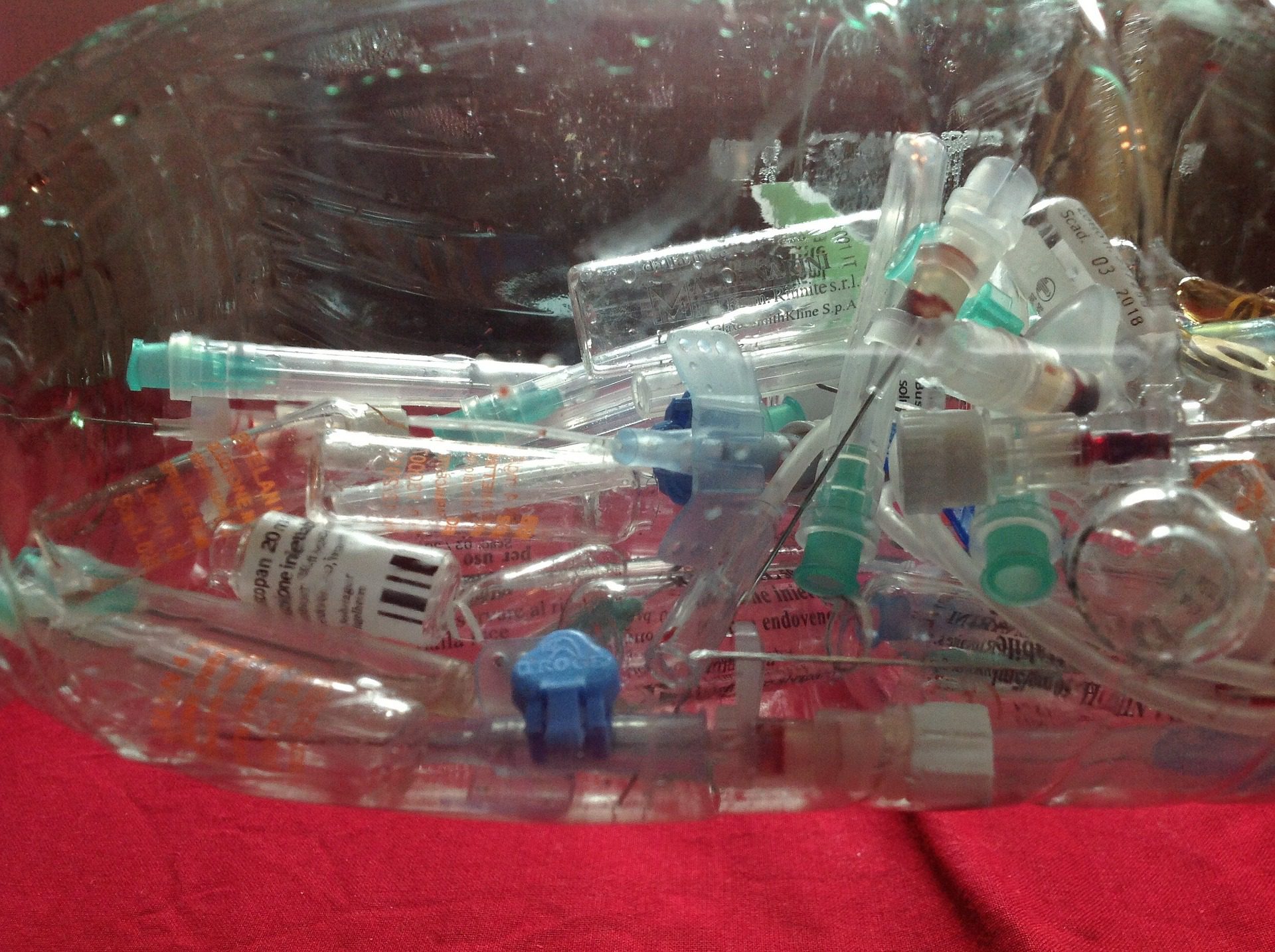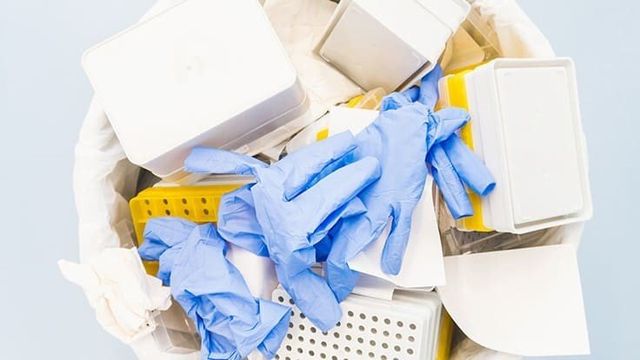Guardians of Tidiness: Resident Medical Waste Removal Service for Your Comfort
Guardians of Tidiness: Resident Medical Waste Removal Service for Your Comfort
Blog Article
Minimize Costs and Take Full Advantage Of Safety: Effective Medical Waste Disposal Approaches
Reliable medical waste disposal approaches are crucial for healthcare facilities to make best use of and lessen prices security. By carrying out appropriate segregation and classification, efficient packaging and labeling, secure transportation and handling, efficient therapy and disposal approaches, and compliance with regulative guidelines, healthcare facilities can make certain the accountable and secure monitoring of medical waste.

Appropriate Partition and Classification
Correct segregation and categorization are important parts of reliable clinical garbage disposal strategies, guaranteeing the security of health care employees, the general public, and the setting - medical waste removal near me. medical waste disposal services with WasteX. By separating various sorts of medical waste at the point of generation, medical care centers can reduce the risk of cross-contamination and possible damage to ecological communities and individuals
One of the vital aspects in proper partition is the identification and classification of clinical waste. This involves classifying waste into various groups, such as infectious, hazardous, radioactive, or pharmaceutical waste. Each classification requires certain handling, storage, and disposal techniques to prevent any type of damaging impacts on human health and the atmosphere.
In addition, correct segregation additionally includes the usage of color-coded containers and labels to clearly determine and differentiate the numerous kinds of medical waste. This aids health care employees and waste administration employees to easily acknowledge and handle the waste properly. Red containers may be utilized for transmittable waste, while yellow containers may be designated for hazardous waste.
In enhancement to partition, correct classification also involves the right product packaging and containment of medical waste. This guarantees that waste is firmly saved and transferred without presenting any kind of threats to individuals or the environment. Utilizing puncture-resistant and watertight containers, along with effectively securing and labeling them, helps to avoid any type of unintended direct exposure or launch of unsafe substances.
Efficient Packaging and Labeling
Efficient packaging and labeling play a crucial function in guaranteeing the efficient and risk-free disposal of medical waste. Proper packaging is important to avoid leakage, breakage, or splilling throughout transport and handling. It assists to reduce the risk of contamination and protects healthcare employees, waste monitoring employees, and the atmosphere from prospective risks.
Medical waste should be packaged in leak-proof and durable containers that are resistant to penetrate and damage. These containers ought to be properly secured to protect against any type of leakage. In addition, the product packaging ought to be able to hold up against the problems of transportation, consisting of temperature level variations and harsh handling.
Identifying is equally essential as it gives vital info regarding the materials of the waste and any kind of possible hazards related to it. The tags must consist of the name of the medical care center, the type of waste, and any kind of unique handling guidelines. Standard and clear labeling makes certain that waste monitoring personnel can conveniently determine and take care of the waste properly.
Efficient packaging and labeling additionally help in the proper partition and categorization of clinical waste. Clear labeling permits simple recognition of different waste streams, such as transmittable waste, sharps, or pharmaceutical waste. This helps in improving the disposal procedure and ensuring that the waste is dealt with or dealt with according to regulatory guidelines.
Safe Transport and Handling
Ensuring the risk-free transport and handling of medical waste is of utmost value in order to protect against any prospective wellness and environmental dangers. Clinical waste, such as sharps, infected materials, and pharmaceutical waste, Website should be effectively packaged and handled to reduce the danger of direct exposure to harmful compounds and microorganisms.
Transporting medical waste needs compliance with stringent laws and standards set by environmental companies and neighborhood authorities. These laws intend to protect the health and wellness of workers included in waste administration and stop the launch of harmful products right into the atmosphere.
To make sure secure transport, clinical waste must be put in puncture-resistant and leak-proof containers that are correctly sealed and labeled. These containers should be secured in a manner that prevents spills or damage throughout transportation (medical waste removal services). Furthermore, it is important to utilize specialized vehicles equipped with ideal safety and security functions to carry medical waste. These vehicles should have ample air flow and be developed to stop leak or contamination.
Taking care of clinical waste also needs correct training and adherence to security protocols. Employees entailed in the handling of clinical waste ought to put on ideal personal protective devices (PPE) such as gloves, masks, and dress to lessen the risk of exposure. They need to additionally comply with strict hygiene methods to stop the spread of infections and make certain the risk-free disposal of waste.
Reliable Therapy and Disposal Methods
Implementing suitable treatment and disposal techniques is vital in taking care of clinical waste properly and decreasing possible wellness and ecological threats. Clinical waste, that includes sharps, contagious products, chemicals, and pharmaceuticals, can position considerable risks if not taken care of and gotten rid of correctly. There are a number of treatment and disposal methods readily available that follow regulative guidelines and promote safe techniques.
One usual approach is incineration, which involves burning the waste at high temperatures. Incineration is efficient in ruining microorganisms and minimizing the quantity of waste, yet it can launch unsafe pollutants right into the air otherwise effectively controlled. Therefore, it is essential to utilize modern incinerators equipped with emission control technologies.
One more method is autoclaving, which uses steam and stress to decontaminate the waste. Autoclaving is reliable in eliminating microorganisms and reducing the volume of waste, yet it needs cautious monitoring and upkeep to make certain appropriate functioning. The sterilized waste can after that be securely gotten rid of in a landfill.
Chemical therapy is an additional choice, which involves making use of disinfectants or other chemicals to counteract microorganisms. This method is generally utilized for liquid waste, such as research laboratory specimens. It is essential to use proper chemicals and follow appropriate treatments to ensure efficient treatment and prevent environmental contamination.

Compliance With Regulatory Guidelines
Abiding by regulatory guidelines is crucial in making sure proper conformity with medical garbage disposal techniques. These guidelines are placed in place to safeguard public wellness, avoid ecological contamination, and keep office security. Conformity with regulatory guidelines is critical for healthcare facilities, as non-compliance can cause penalties, fines, and reputational damage.
Governing standards outline the appropriate handling, storage space, transport, and disposal of clinical waste. They provide particular guidelines on product packaging requirements, labeling, and record-keeping. These guidelines likewise attend to the partition of various waste streams, such as sharps, transmittable waste, and pharmaceutical waste. Healthcare facilities should make sure that their waste monitoring techniques straighten with these standards to minimize the risk of exposure to dangerous materials and avoid the spread of infections.
To maintain compliance, medical care centers need to develop thorough waste monitoring programs that consist of personnel training, routine you can try here audits, and ongoing monitoring. It is important to keep up-to-date with any changes or updates to governing standards, as methods may evolve more information with time. By remaining notified and executing proper methods, medical care centers can decrease the potential for governing infractions and safeguard the health and safety and security of their team, individuals, and the surrounding community.
Verdict
To conclude, executing reliable clinical waste disposal approaches is vital for lessening costs and making the most of safety and security. Appropriate segregation and classification, efficient product packaging and labeling, safe transport and handling, and effective therapy and disposal methods are necessary steps to make certain compliance with governing guidelines. medical waste removal service. By sticking to these techniques, medical care facilities can secure the environment and public health and wellness while additionally decreasing economic burdens connected with clinical waste management
By carrying out proper segregation and classification, efficient packaging and labeling, secure transport and handling, reliable treatment and disposal approaches, and conformity with governing standards, medical care centers can ensure the safe and accountable management of medical waste. Red containers may be utilized for transmittable waste, while yellow containers might be assigned for unsafe waste.
Clear and standardized labeling makes sure that waste monitoring employees can easily identify and deal with the waste properly. (medical waste disposal services with WasteX)
Clear labeling allows for easy recognition of various waste streams, such as contagious waste, sharps, or pharmaceutical waste. These guidelines also resolve the partition of different waste streams, such as sharps, infectious waste, and pharmaceutical waste.
Report this page